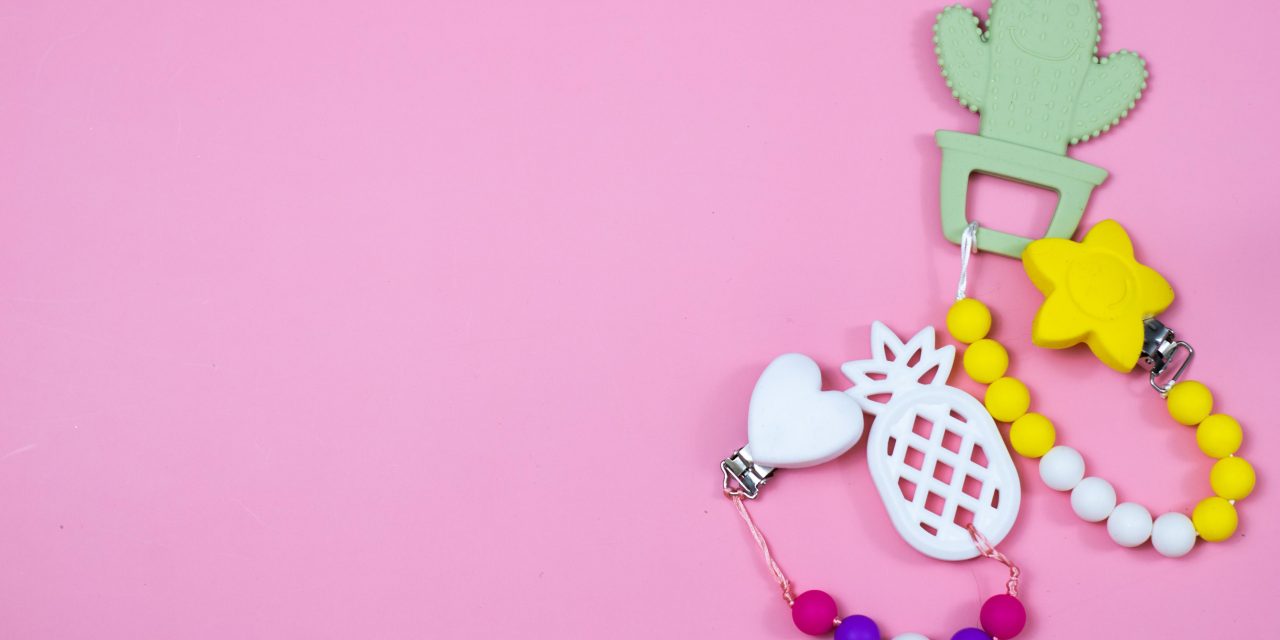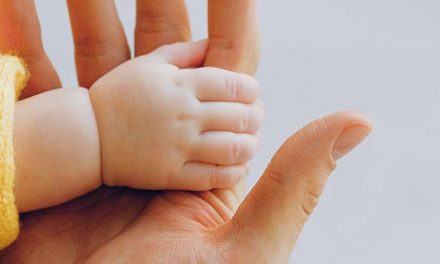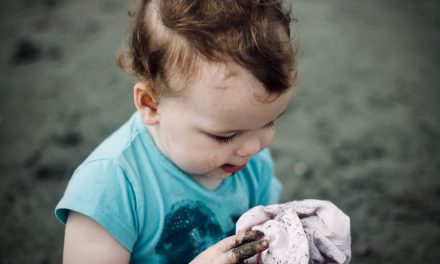Teething is a time when your baby’s teeth finally start to push through their sensitive gums. For some babies, teething starts as early as 3 months. But most babies start getting their first tooth at the age of 6 months. Whenever the teeth start pushing through the gums, your little one starts to feel the pain. Dealing with a teething baby is a new parenting phase too, so let’s help you learn how to stop baby teething pain.

Baby teething pain can leave your child cranky and chewing on their fingers.
When Does A Baby Start Teething?
The teething timeline is different for every baby. Some babies start teething way earlier than others. There’s no hard and fast rule that your baby has to start teething between the first 4 to 6 months but this is usually the case for many babies. It’s also believed that the first two teeth that show up are the bottom front teeth. After those teeth start to show, the upper front teeth could begin to go through the same. Once again, it’s not the same case for every baby so don’t stick to these timelines. Ensure you check with your pediatrician if you have doubts.
By the age of 3, most kids grow a set of 20 baby milk teeth. This means that your baby is going to experience teething pain from roughly 6 months till the age of 3. The teething pain usually lasts for up to 7 to 8 days when a tooth is trying to erupt through the gum. But if a set of several teeth is trying to grow out at the same time, then the teething pain could last longer.
Don’t wait for all your child’s milk teeth to grow to start brushing them. In fact, doctors recommend gently wiping your baby’s gums with a cloth after feeds. This helps to prevent baby bottle tooth decay. Once their teeth start to erupt, gently brush them without toothpaste at first. These milk teeth only start to fall after they turn 6 years old to make space for adult teeth to grow. After 6, you could tell your kid about the tooth fairy if you’d like! The growing and falling of teeth is an important milestone for your child and you can keep track of every milestone like this one on the ImmunifyMe App.
Signs Your Baby Could Be Teething
There are a few changes you might notice when your baby starts teething. Here are some signs to look out for –
- Chewing And Biting – When your baby is teething, the gum area feels extremely irritable to them. To do something about it and relieve the irritation, babies start chewing on their toys or might even bite you.
- Messy Sleep Schedule – At times, a way to know something is bothering your baby is when they don’t nap as much as they normally do. If your baby wakes up more frequently than usual, it’s probably because the gums are bothering them.
- Swollen, Red Gums – You might notice that the gum has turned red in one spot in comparison to the rest. This could be at a point where the tooth is trying to erupt. This is one of the many signs that your baby has started teething.
Do note that you shouldn’t write off everything that your child does as a teething symptom just because you’re expecting it. If you observe any unusual symptom in your baby and it’s persistent, don’t hesitate to ask your pediatrician’s opinion on it.
How To Stop Baby Teething Pain?
You won’t be able to entirely stop baby teething pain since it’s an unavoidable aspect of your baby’s growth milestones. However, there are certain things you can do to help ease it.
- To ease the pain your baby feels on their gums, you can consider massaging your baby’s gums with a clean finger. Make sure you wash your hands thoroughly before you massage your baby’s sore gums and be extremely gentle.
- You can also give your baby a clean teether to chew on. When your baby stops being fussy after gnawing on the teether, you’ll know that their gums have felt relief.
- You can also use a clean, wet washcloth to rub the area of the gum that’s causing pain to your baby. It’s okay to also use a slightly cool washcloth as it provides cooling relief just like how ice cream does to a sore gum. Make sure you’re not using a frozen washcloth but just a slightly cooled one.
- See if your baby feels better with a teething ring. Opt for one made of rubber that’s firm enough for your baby to comfortably chew while not breaking it.
- Your baby may also feel relief chewing on the nipple of a bottle. If this is the case, fill the bottle with water. Avoid the use of juices or milk for teething relief from a bottle since these can cause tooth decay.
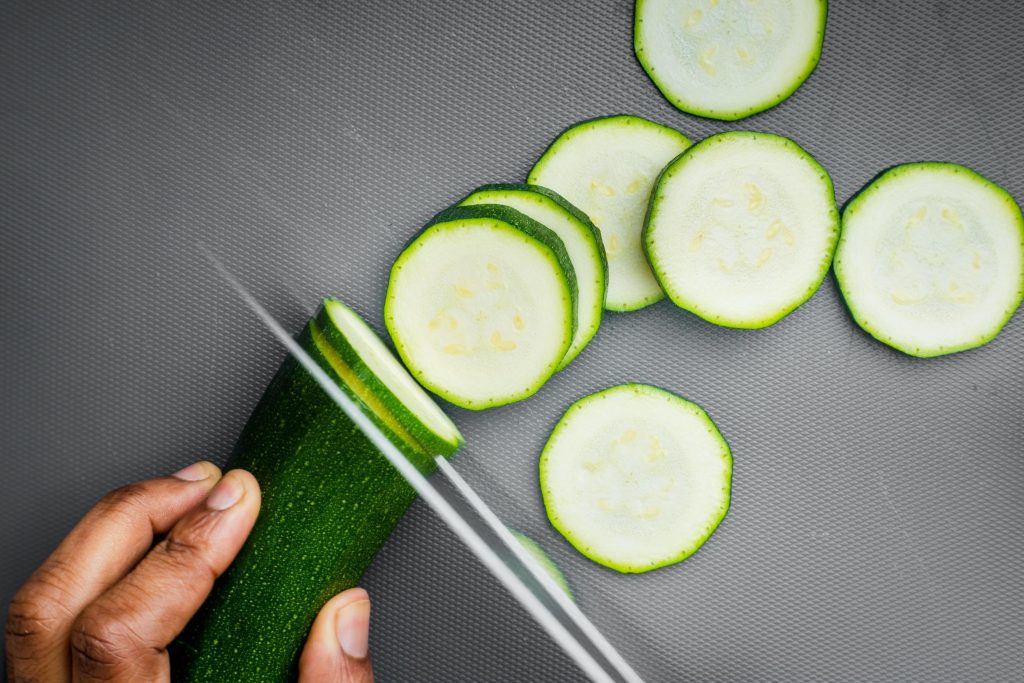
Try a few slices of cucumber to help your baby relieve teething pain.
- If your baby is a toddler beginning to eat solid foods, you could offer something edible for them to chew and gnaw on. These could be as simple as pieces of cucumber or carrot. When doing this, keep a constant eye on them so that they don’t accidentally choke.
- If your baby seems to be extra cranky and in severe pain, you could try over-the-counter infant medication. Make sure you avoid painkillers with the ingredients benzocaine or lidocaine, both harmful for babies. More importantly, consult with your pediatrician before trying this step out.
- One part of the teething process is excessive drooling. Unchecked, the drool can irritate your baby’s skin, making the teething process worse. Keep gently wiping off the drool with a clean cloth, and apply a bit of moisturizer to keep the skin hydrated
Things To Keep In Mind
Regularly Clean Objects Around Your Baby
When your baby is teething, they end up picking up every edible or inedible object around them and begin gnawing on them. To ensure that your baby doesn’t put any germs or choking hazards in their mouth, you have to be even more alert than usual. Make sure you clean every toy your baby plays with so that they don’t catch an infection.
During teething, some babies develop a mouth rash because of gnawing on random objects found in the house. This is something that you can easily avoid by regularly cleaning the teether or toy your baby plays with. We also recommend completely removing sharp, small objects around your baby to lower these risks. This is one of the mistakes that new parents make, not realizing just how many things will enter their baby’s mouth.
Keep An Extra Teether
Another tip we’d like to share with you is to keep an extra teether handy with you at all times. Babies don’t have the greatest grip over the toys they hold and the chances of them dropping the teether you give them are high! This is when the extra clean teether you have will come in use.
Buy A Teether Wisely
You’ll find different types of over-the-counter teethers but there are some teethers that you shouldn’t buy. We suggest not buying a teether that has liquid gels in them. Your baby’s chewing could break open the teether, posting the danger of your baby ingesting the liquid. Every time you sterilize your baby’s teether in hot water, double-check that the teether isn’t damaged before handing it to your baby. Ideally, the best kind of teether is one made of silicone or rubber. Completely avoid plastic because it could hurt your baby’s gum.
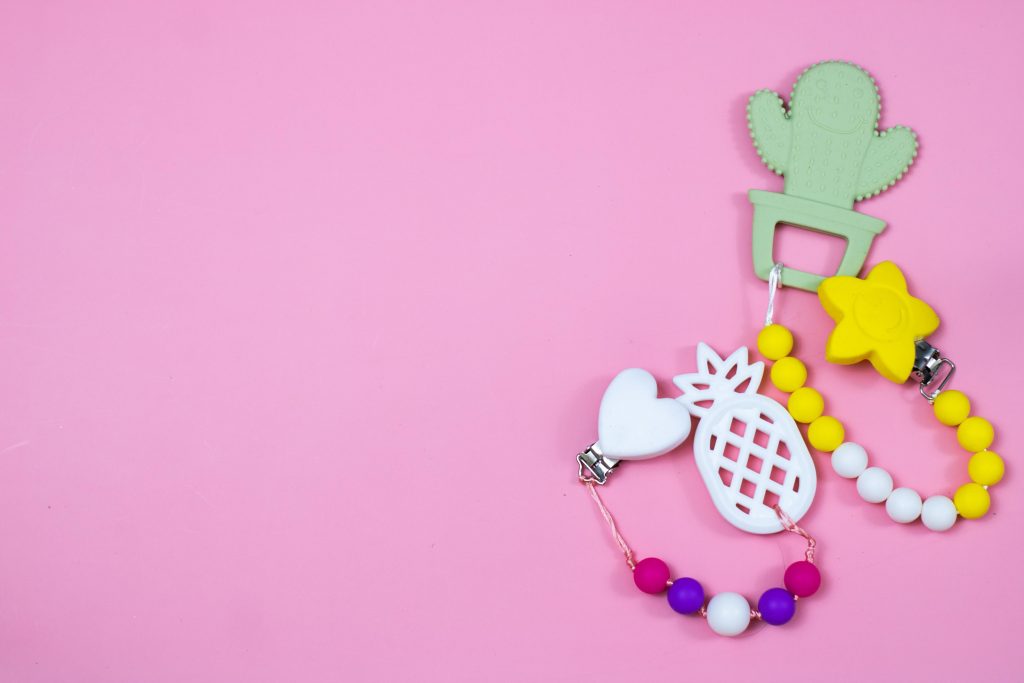
You can buy detachable rubber teethers for your teething baby.
Conclusion
It’s understandable to constantly worry about how to stop baby teething pain when you see your little one cranky and crying. But, teething is a phase of your baby enduring the pain of growing a tooth for the first time. Your baby might be a little fussier than usual but give them the extra care they need till the pain reduces. Using a cold spoon or a cold washcloth is the best way to soothe a sore gum. If it’s been over a week that your baby is suffering from teething pain plus is catching a fever, it’s best to head to your pediatrician. The discomfort of teething is only occasional, and your support to distract your baby from the pain can ultimately help your baby feel better.
Now that you know how to stop baby teething pain, you’re prepared with one more aspect of parenting. Need more help with knowing what to expect during each stage of your baby’s growth? Then ensure you download the ImmunifyMe app to help you get vaccination reminders, nutrition plans, and much more.
FAQs On How To Stop Baby Teething Pain
How Long Does It Take For A Tooth To Break Through A Baby’s Gums?
A tooth could take roughly 7 to 8 days to break through the gum, but this differs from baby to baby. The teething pain starts from the moment a tooth tries to erupt and lasts till the tooth is out. Even after the tooth is out, your baby could experience pain for 2 to 3 days.
How Can I Help My Baby With Teething Pain?
How to stop baby teething pain is often the question that concerned parents ask. You can reduce the teething pain for your baby by applying a slightly cool washcloth over the sore gums. You can also massage your baby’s gum with your finger for some relief from the pain.
Is Teething Worse At Night?
Teething pain isn’t worse at night, it’s just more noticeable for the baby. A baby is usually distracted with toys or the teether during the day and hence manages to at times forget about the teething pain. At night, the sudden teething pain disrupts a baby’s sleep and this is why your baby might react more intensely to teething pain at night.
How Do You Know If Your Baby Is Teething?
When your baby is teething you’ll notice that the gums look sore and slightly redder. That’s a sign that a tooth is trying to erupt out of your baby’s gums. Babies usually also start chewing on things around them or biting when they’re just starting to teeth.

